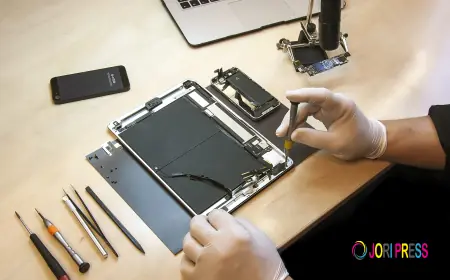A Deep Dive into the Mechanics of Colour Prediction Algorithms
Colour prediction games have captured the attention of many within the online gaming space.

Colour prediction games have captured the attention of many within the online gaming space. They are fast, engaging, and often feel like a test of sharp instincts and strategic timing. But beneath the surface of every click lies something more complex than most users realise. What really drives these games is the algorithm.
Let us take a closer look at how these colour prediction algorithms work, especially in platforms like the Diuwin aviator game and colour trading Diuwin, which have become known in the prediction space. While they seem random to the eye, most of the time, they are built on structured mathematical logic.
What Exactly is an Algorithm in a Colour Game
In simple words, an algorithm is a set of instructions written in code that helps software perform specific tasks. In a colour prediction game, the task is to show a colour, record the user's choice, and display whether it was right or not.
Now, many players feel as if the system has a mind of its own. But that is not really the case. What happens is that the algorithm usually works based on pseudo-random number generation. These numbers decide which colour shows up next. Even though they feel random, they are actually created through a programmed formula that mimics randomness but stays within limits.
That is how the Diuwin aviator game and colour trading Diuwin keep things unpredictable yet fair at the same time. The result feels natural to the player but is still bound by the game’s core structure.
Are Colour Predictions Really Random
This is where things get interesting. The short answer is no, they are not purely random. The algorithm uses what we call a seed value. This seed is like the starting point of a number sequence. Every time a game starts, the system might generate a new seed or build on the last one. From there, the system creates the next outcomes.
It feels like random colour prediction because the numbers change quickly, and there are very few patterns to catch in real-time. But if you had access to the full seed logic, you could technically trace every outcome. Of course, that information is never available to users. That is part of how fairness is managed while still keeping the system protected.
In places like colour trading Diuwin, this method allows users to keep guessing and learning without making the game too predictable.
How Does Past Data Influence Future Predictions
One question many users ask is whether past outcomes affect the next result. In most standard systems, no, they do not. That is because true algorithm-based colour prediction games reset each round, using a fresh random value to determine the outcome.
Still, human minds are wired to find patterns, even if none exist. That is why some users track past results, thinking they can find a formula that cracks the system. In reality, while watching trends can help with personal strategy, the algorithm itself usually does not repeat based on history.
However, some platforms may apply basic logic rules to avoid obvious repetition, like not showing the same colour five times in a row. This gives users a slight edge if they are paying attention.
In the Diuwin aviator game, for instance, you might find users creating prediction charts or writing down colour sequences, hoping to uncover a rhythm. It is not a bad habit, but one must understand it does not guarantee success.
Personal Insight into Algorithm-Based Games
Let me share something here. When my ffriend first started exploring these colour prediction games, he assumed it was all guesswork. But after a few weeks, he began to notice that the game was not as wild as he thought. It had a structure. Not always visible, but it was there.
Especially in colour trading Diuwin, where the visual interface makes you think quickly, he started tracking rounds on a paper notebook. No complex math, just basic observation. Over time, he realised the algorithm was consistent in how it handled unpredictability. That sounds strange, but it made sense once he gave it some thought.
And that taught me something valuable. While you cannot beat the system, you can respect its design. That in itself becomes a kind of gameplay. It is not about tricking the system but understanding your relationship with how it operates.
How Developers Use Algorithm Mechanics for Game Balance
Developers who design these games are not just throwing random code together. They spend time fine-tuning the algorithm to make the game both fair and exciting. They do this by adjusting the probability range, changing how often a specific colour can appear, or adding limits to stop long runs of the same result.
This balance keeps the user engaged without letting the game become too easy or repetitive. In the Diuwin aviator game, this tuning is done so subtly that players might not even notice. The game seems fast and reactive, but behind it is a stable and calculated mechanism.
By doing this, the developers ensure that colour trading Diuwin remains fun while still being driven by logical systems.
Final Thoughts
Colour prediction algorithms are more than just background tools. They shape the entire experience. From randomisation to seed generation, from pattern avoidance to logic limits, every element plays a part in building a structured, fair, and enjoyable system.
If you play long enough, you start to notice the rhythm. You stop thinking of it as just colour selection and start recognising the design behind it.
And that's the true allure of these games. They are basic on the surface but layered. Whether you're playing Diuwin aviator game for the fun, or color trading Diuwin for the strategy, understanding how the mechanics work will change how you play.
It may not make you perfect at predicting but it will certainly make the experience more worthwhile.
What's Your Reaction?
 Like
0
Like
0
 Dislike
0
Dislike
0
 Love
0
Love
0
 Funny
0
Funny
0
 Angry
0
Angry
0
 Sad
0
Sad
0
 Wow
0
Wow
0





















































